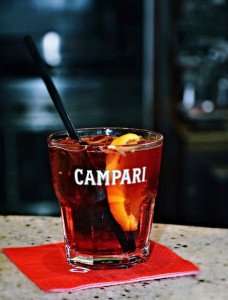Recipes from Sarteano: Pici al Ragù Toscano
February 21, 2024
Meet Chef Chiara, the culinary instructor behind our Authentic Tuscan Cooking in the Val d’Orcia Valley and this recipe for Pici al Ragù Toscano! Chef…
Read This Post Herbs don’t just add flavor to your latest meal creation. They can add a wonderful twist to what you’re drinking too — and we’re not just talking about cocktails like mojitos (although they are one of our favorite summer cocktails).
Herbs don’t just add flavor to your latest meal creation. They can add a wonderful twist to what you’re drinking too — and we’re not just talking about cocktails like mojitos (although they are one of our favorite summer cocktails).
Check out our cooking vacations in Italy.
 Aperitifs are drinks typically made with liqueurs and designed to stimulate your hunger; they’re therefore served as an ‘appetizer’ drink at many of our cooking vacations, and the liqueur itself frequently includes herbs as an ingredient.
Aperitifs are drinks typically made with liqueurs and designed to stimulate your hunger; they’re therefore served as an ‘appetizer’ drink at many of our cooking vacations, and the liqueur itself frequently includes herbs as an ingredient.
But what are those aromatic herbs exactly? That’s a bit trickier to pin down, and that’s because the makers of liqueurs are notoriously secret about how they make their sweetened spirits. And the same can be said of digestifs, or after-dinner drinks that help with digestion. That doesn’t stop people from guessing what aromatic herbs are used exactly. For one, take the iconic Campari from the Italian Veneto region. Many have guessed that ginseng and rhubarb are used to make this bitter liqueur, but that’s all just a hypothesis, and has been for quite some time.
 Learn how to make another Italian liqueur, limoncello.
Learn how to make another Italian liqueur, limoncello.
The popular Veneto creation was first introduced in the mid 1800s in Milan by Gaspar Campari. The recipe for the bitter drink is today known only by a select few who work for the Campari Group, and all they’ve admitted is that it’s made through an infusion of fruit, plants, and herbs, and that flavor concentrate is mixed with water, sugar, and alcohol. The finished liqueur is definitely bitter on its own, but it works especially well in aperitif cocktails, like Negroni and Spritz, which can be enjoyed during a number of cooking vacations in the Veneto, such our Venice Cooking Odyssey vacation.
Campari is just one of many liqueurs that use aromatic herbs too. Nearly all use herbs or spices in some form, and that goes for Italian ones — like Vermouth — to ones you’ll find in France as well, such as Dubonnet, Lillet, and Chartreuse to name just a very few. (Read more about anisette liqueurs here.)
 But herbs are not just in the purview of large-scale liqueur makers either. Home cooks can join in the fun and get some drink inspiration this Spring and Summer by picking herbs from their very own backyard garden. Those herbs can be used to infuse your own liquor. But let’s keep in mind the difference between liquors and liqueurs before we start making those infused drinks. Liqueurs are technically sweetened spirits while liquor is an alcoholic beverage often made with grains and can be used as a base to make liqueurs.
But herbs are not just in the purview of large-scale liqueur makers either. Home cooks can join in the fun and get some drink inspiration this Spring and Summer by picking herbs from their very own backyard garden. Those herbs can be used to infuse your own liquor. But let’s keep in mind the difference between liquors and liqueurs before we start making those infused drinks. Liqueurs are technically sweetened spirits while liquor is an alcoholic beverage often made with grains and can be used as a base to make liqueurs.
Make your own strawberry liqueur, or liquore alla fragola.
 Contact us to plan your next cooking vacation!
Contact us to plan your next cooking vacation!
Back to the garden and kitchen, the combinations for your own infused liquors are endless! Tequila can be mixed with mango as well as cilantro and lime for a margarita, or vodka with all sorts of citrus, and of course, some herbs too.
Learn more about liqueurs, as well as aperitifs and digestifs, with a cooking vacation to Italy.
By Liz Hall
Find more photos, videos, food facts, and travel stories from The International Kitchen on Facebook, YouTube, Instagram, Pinterest, and Twitter.